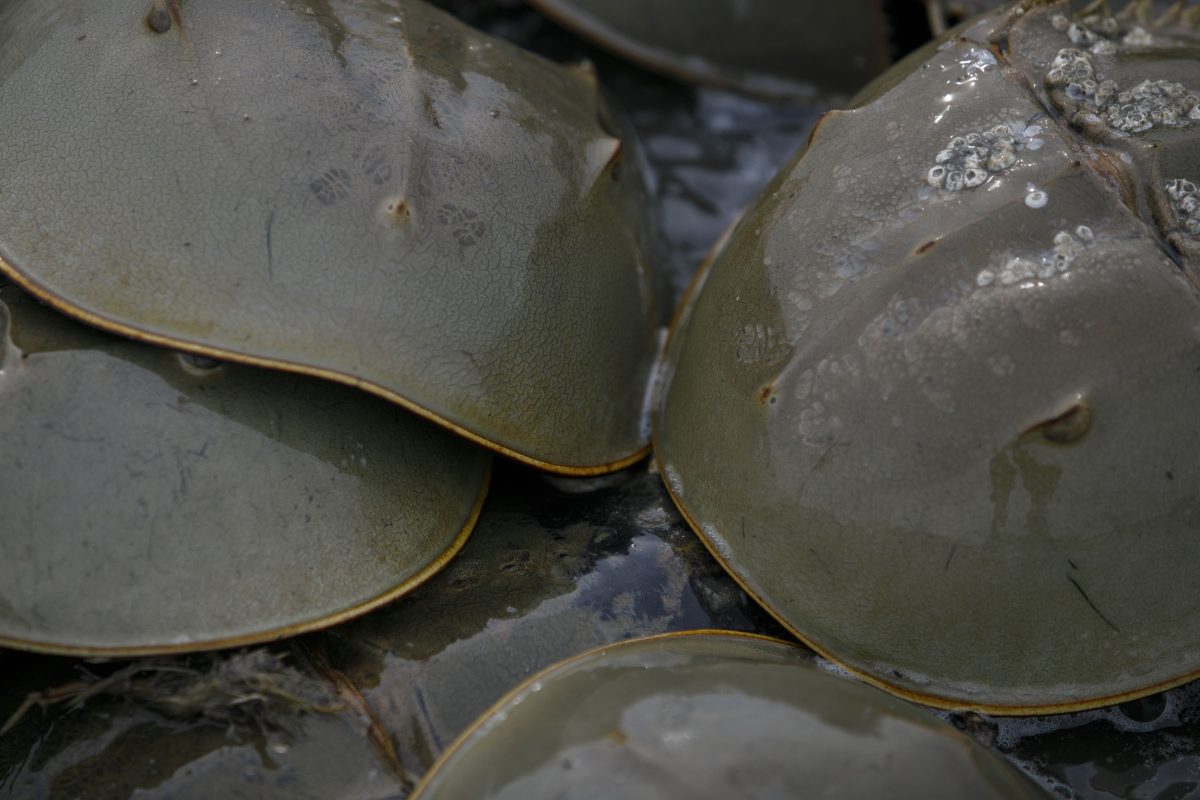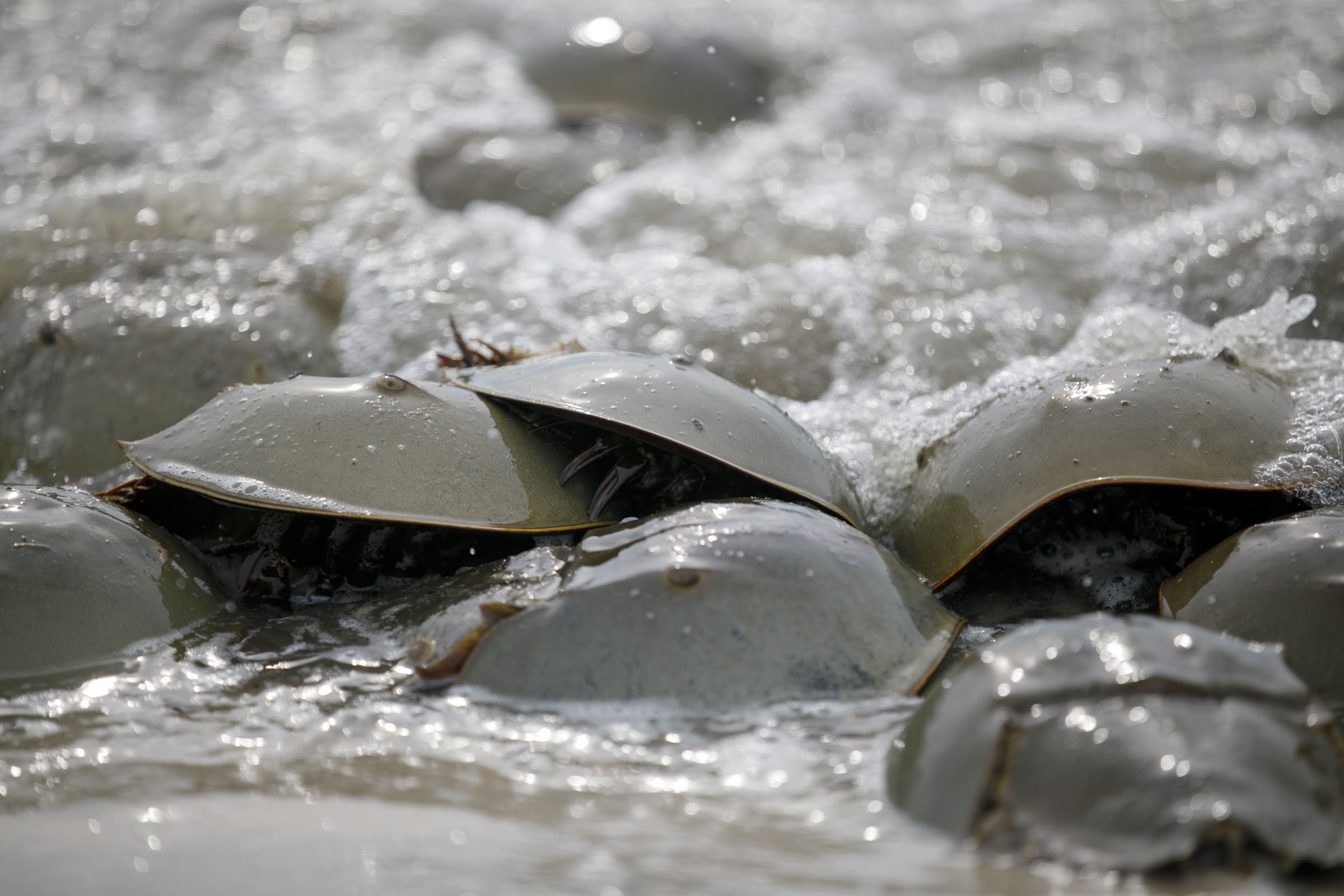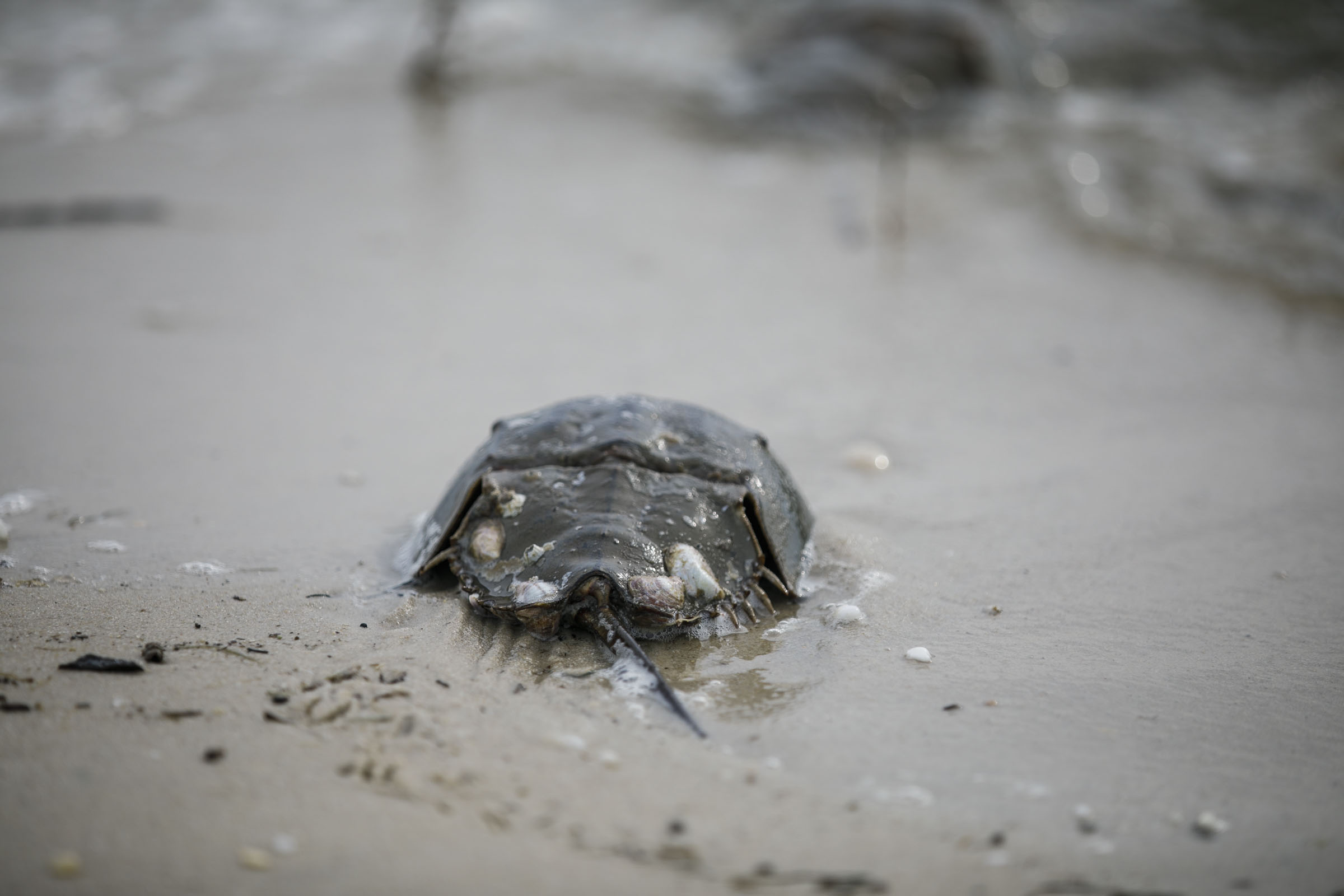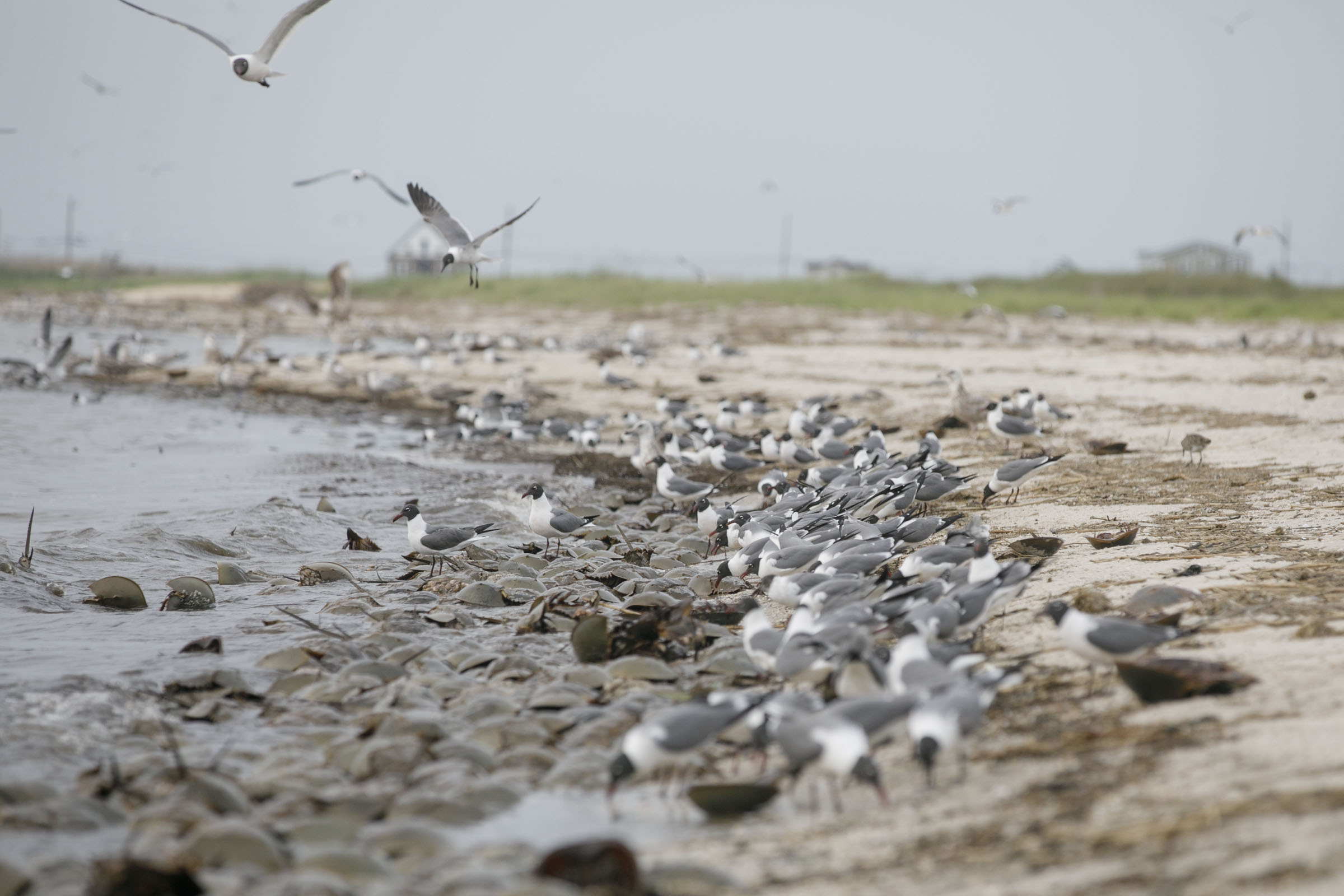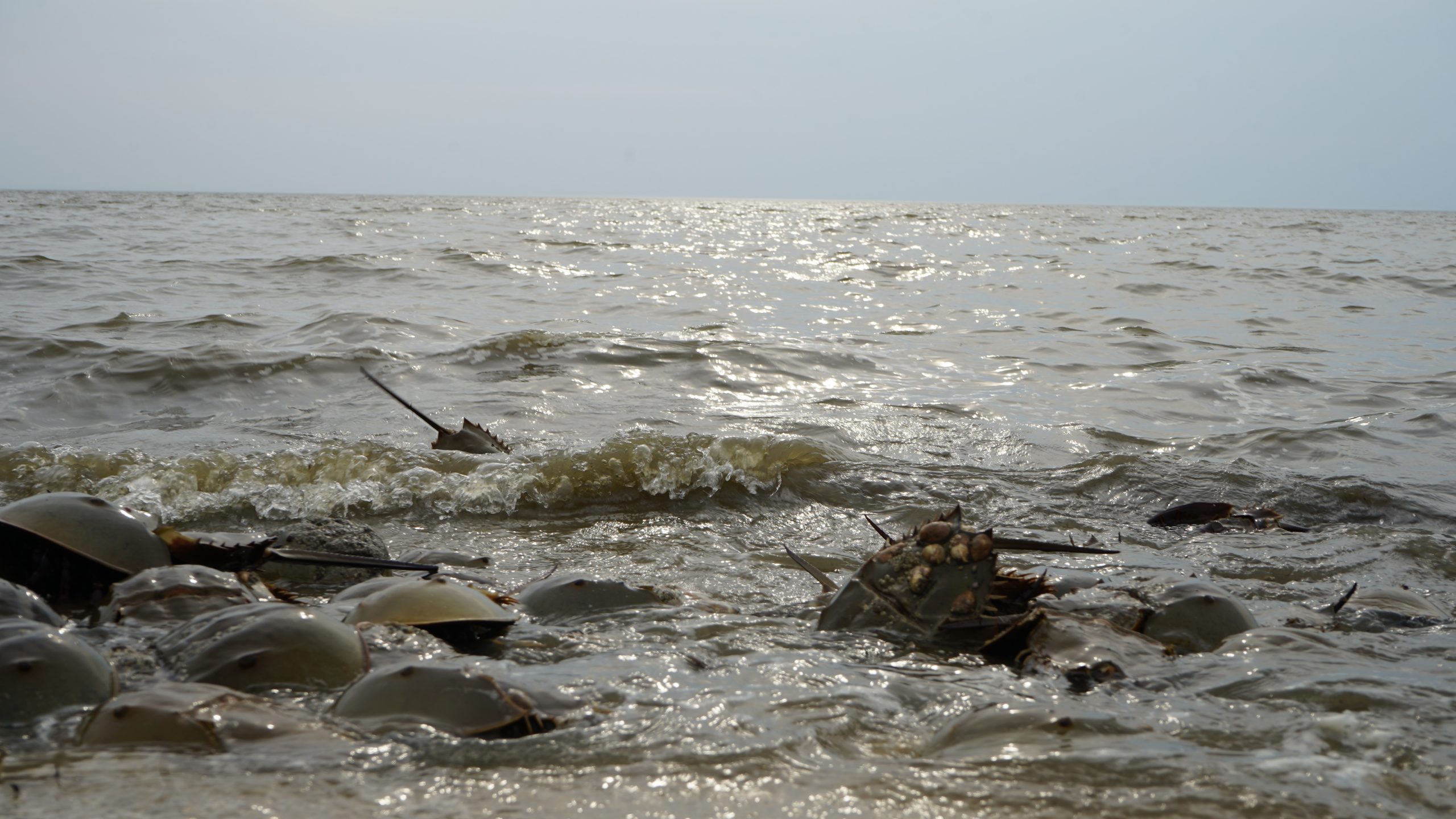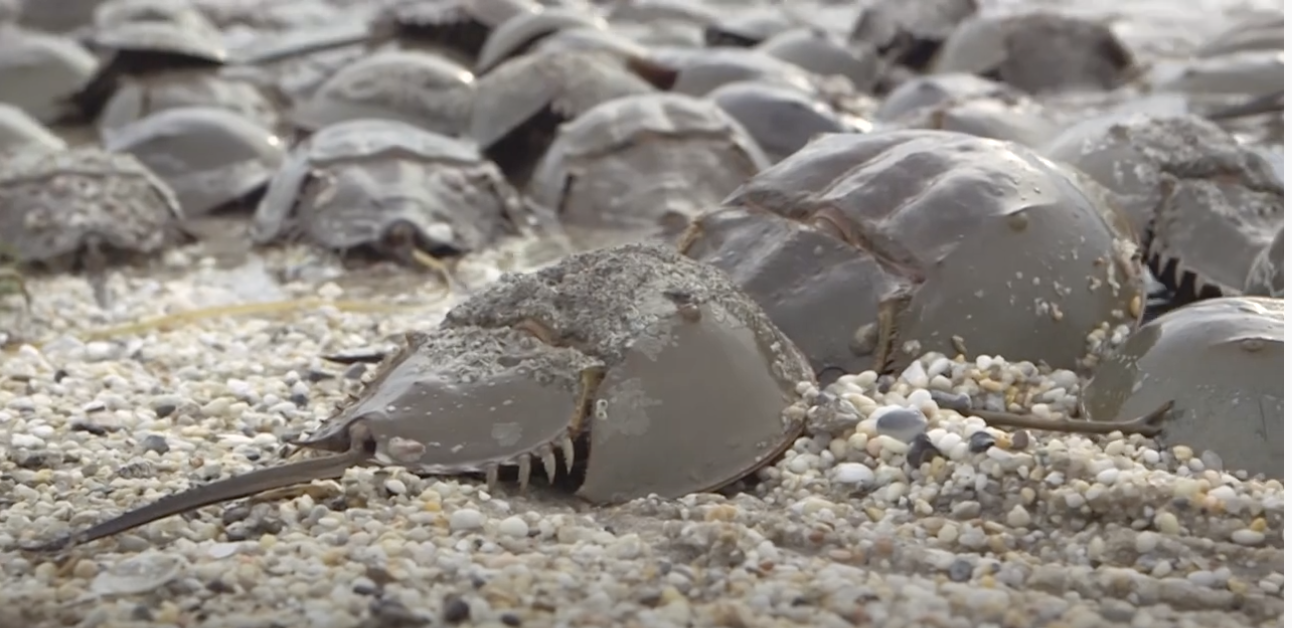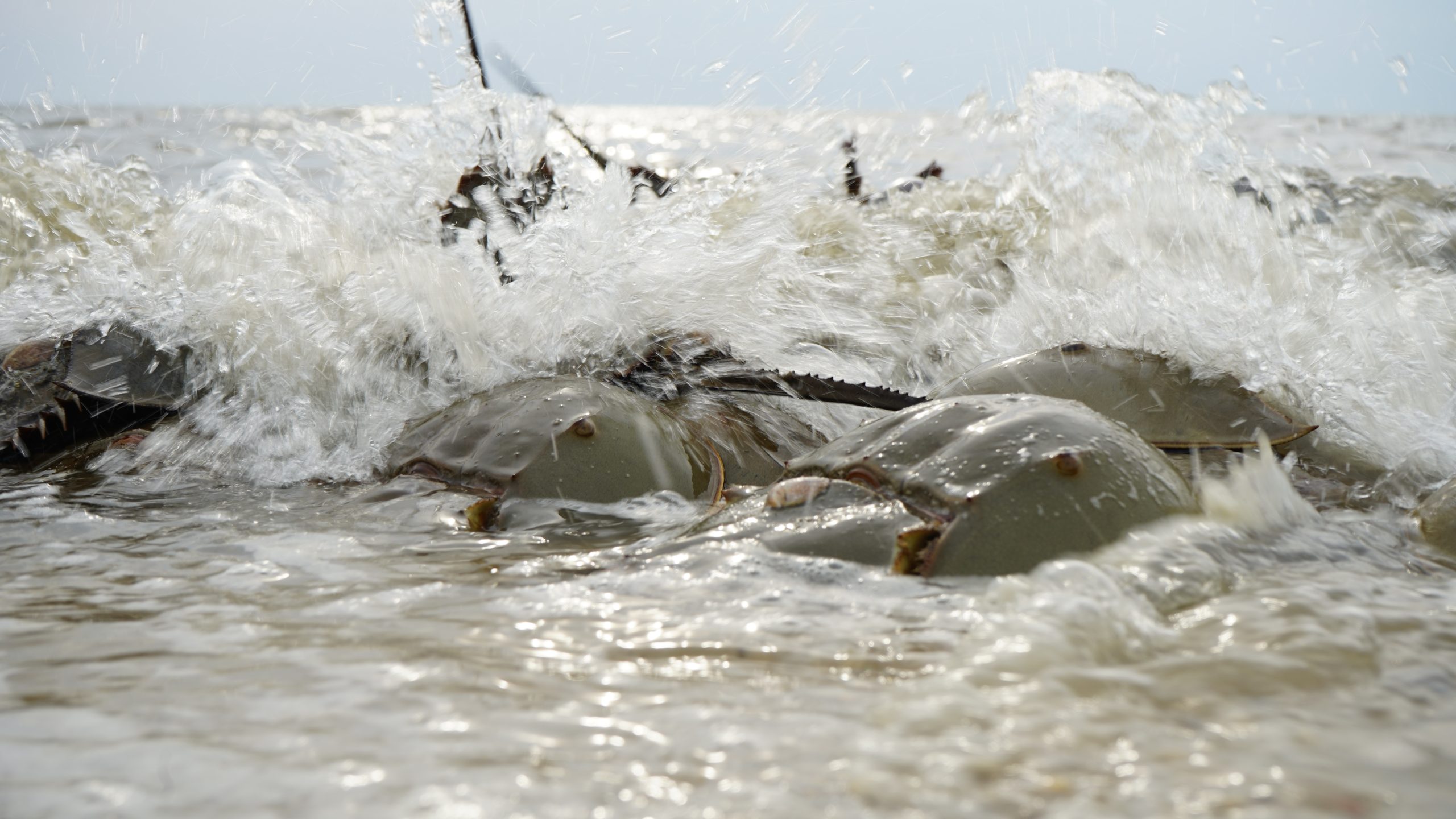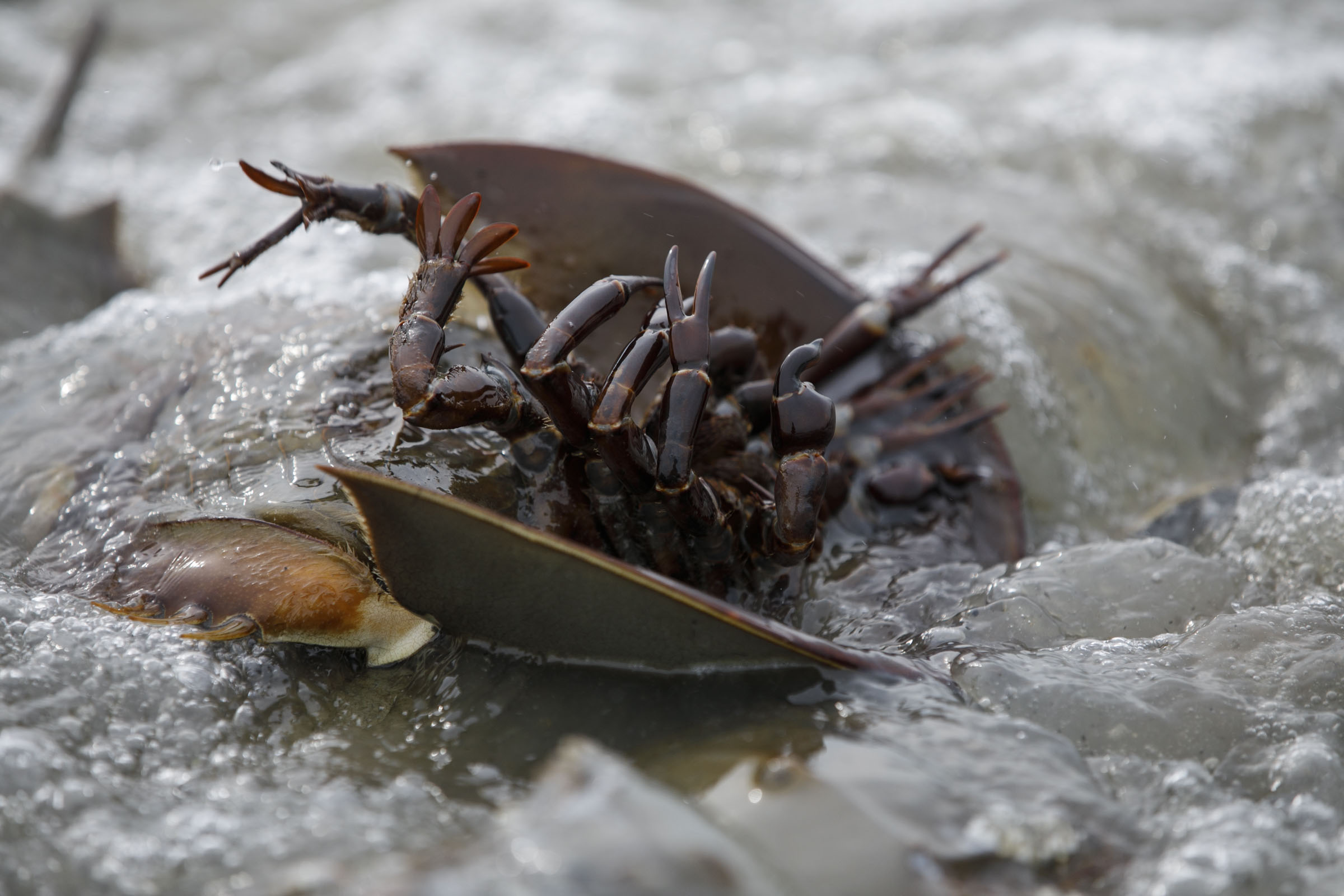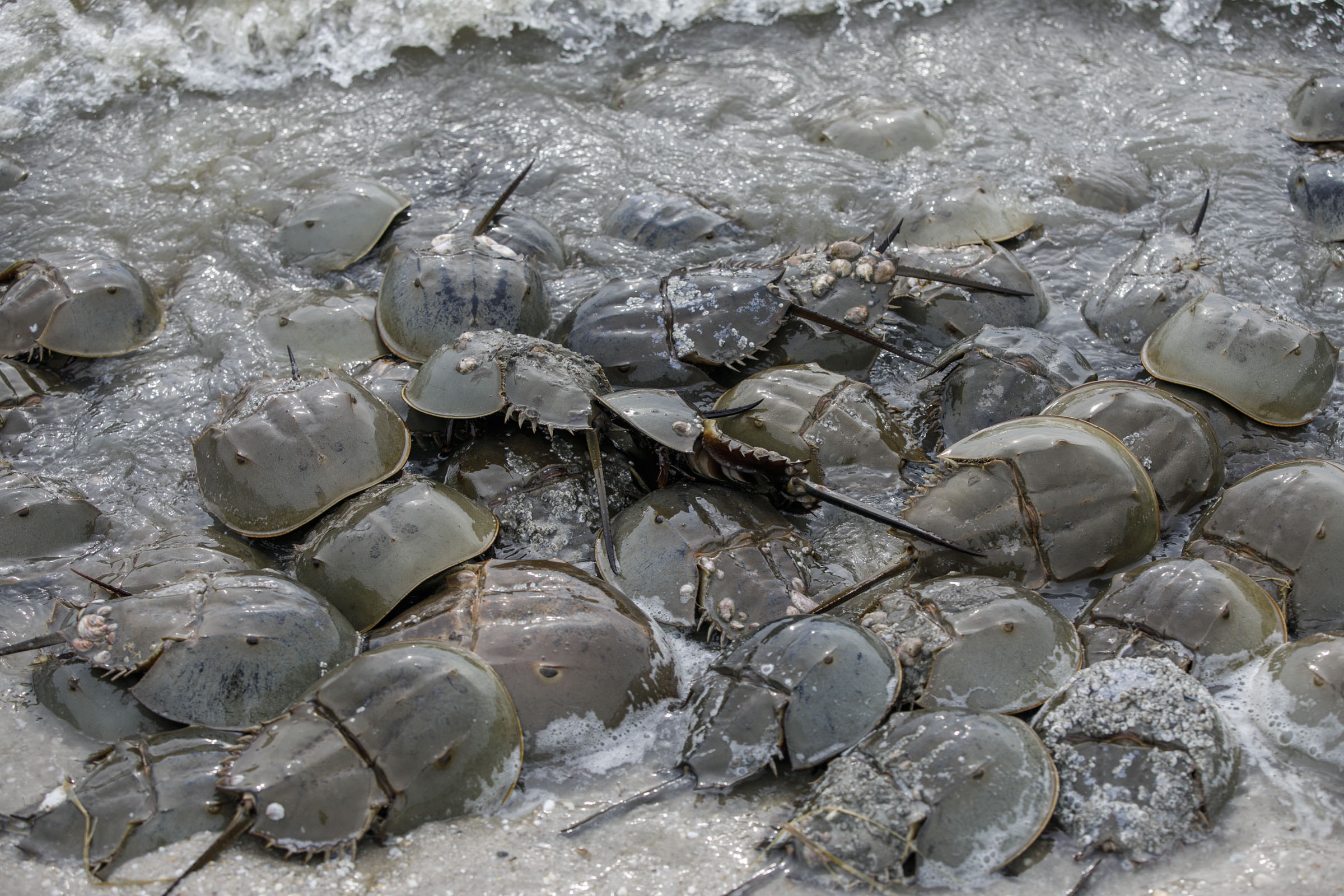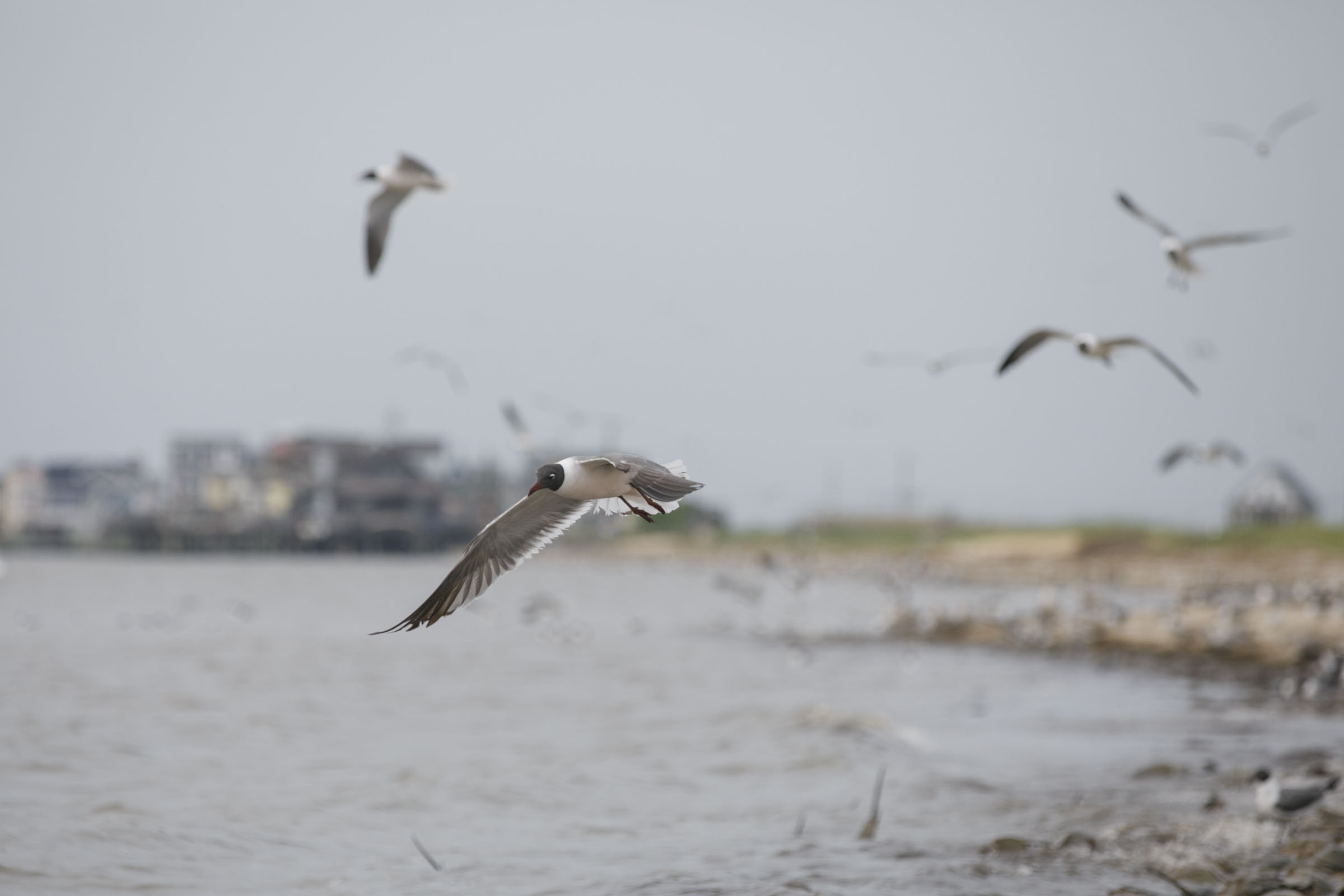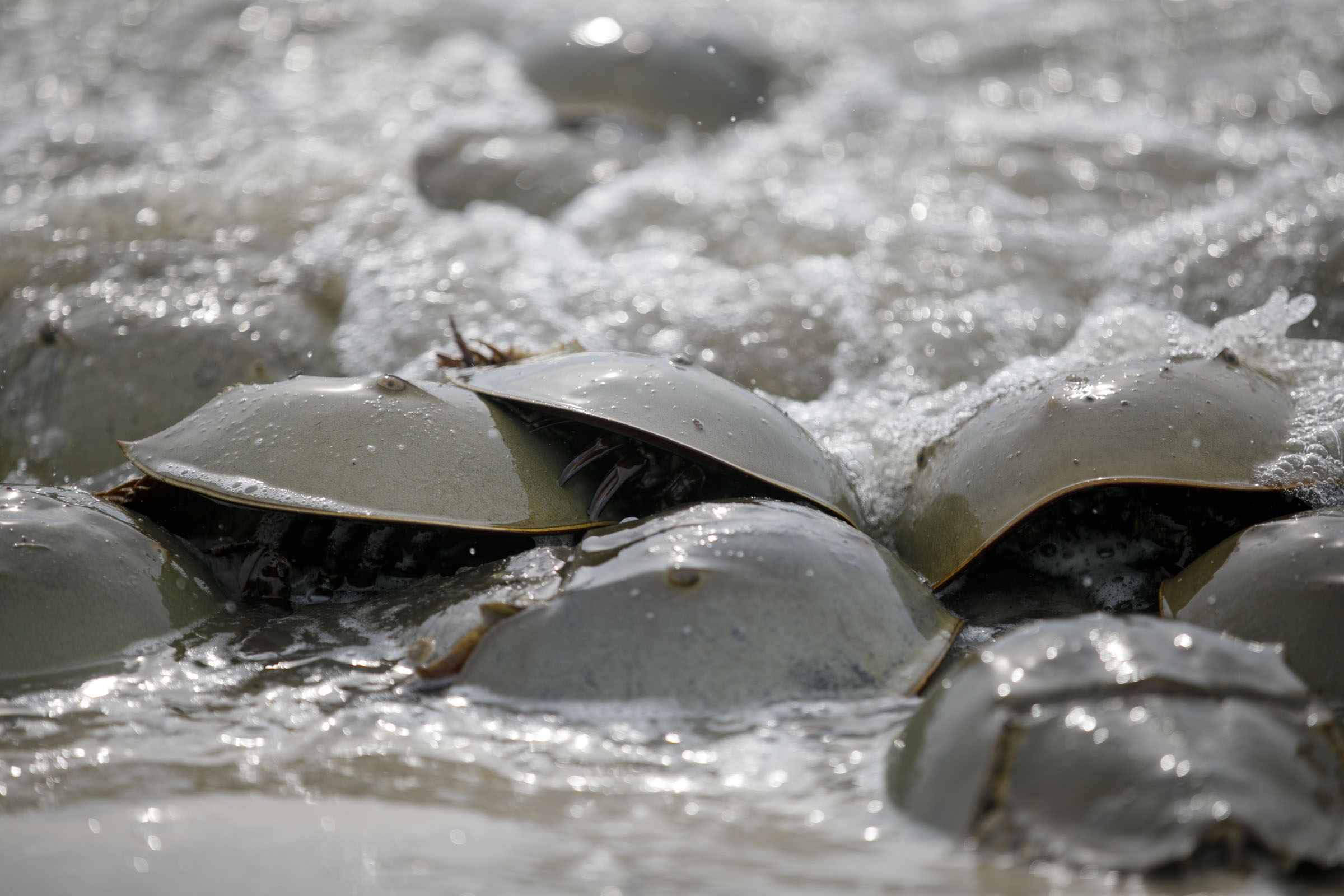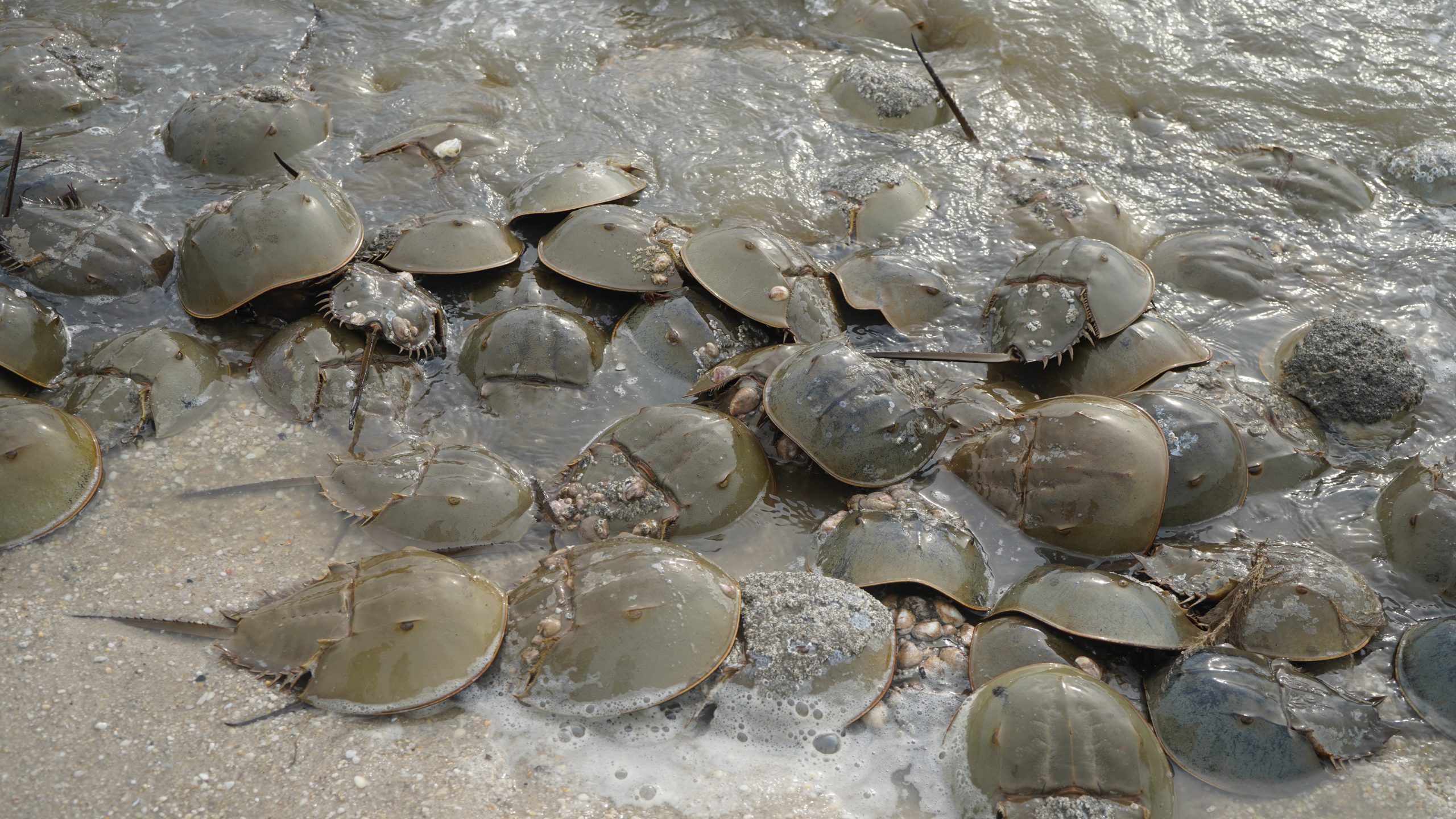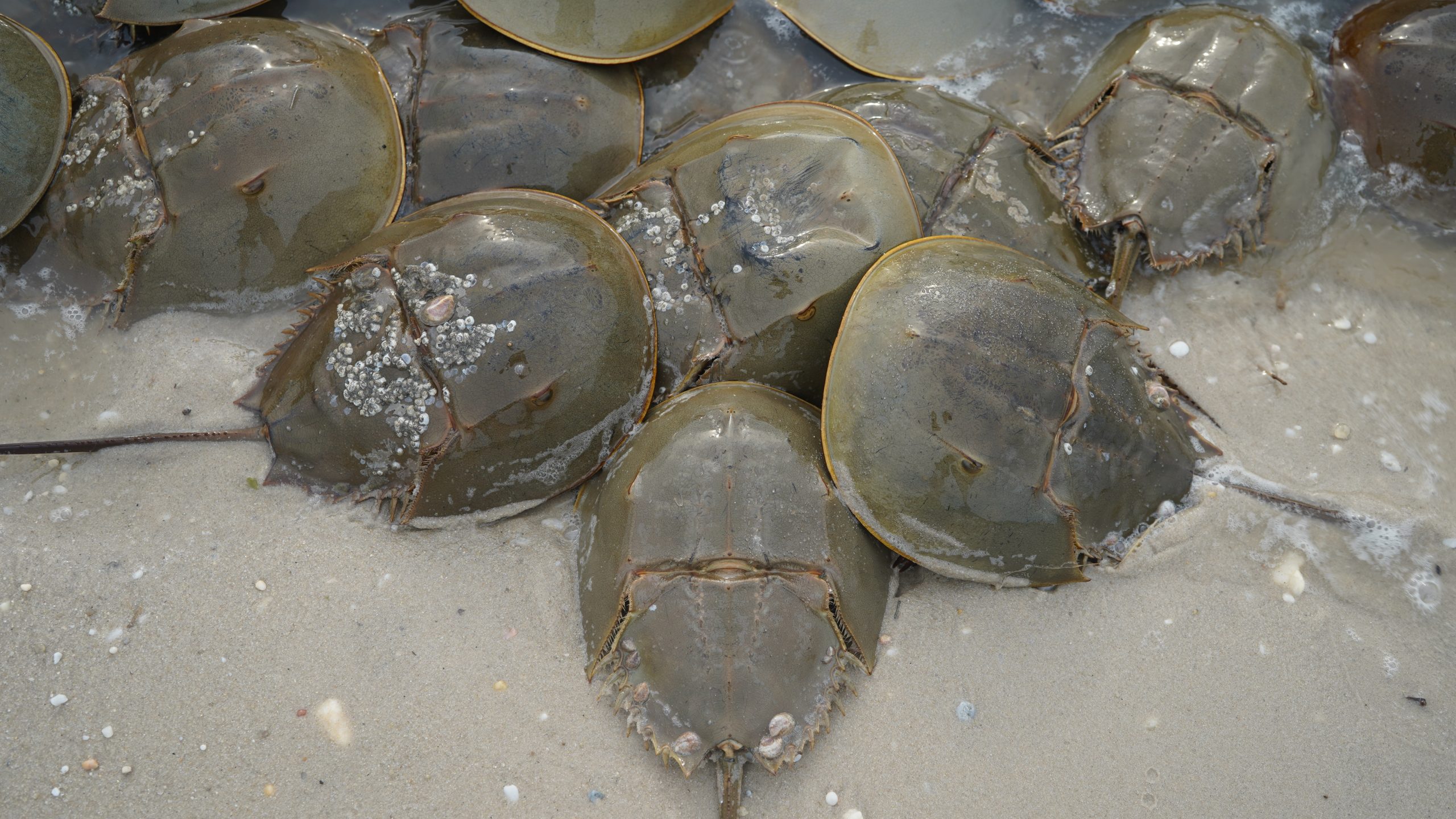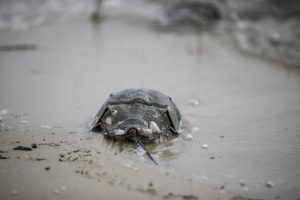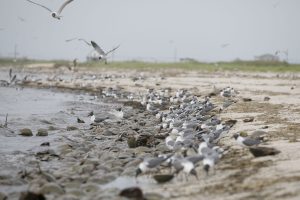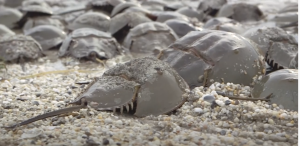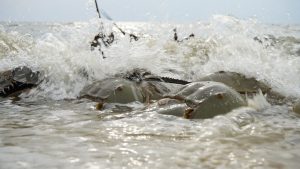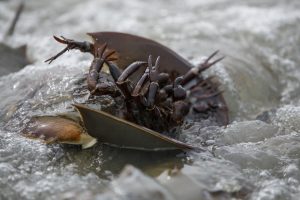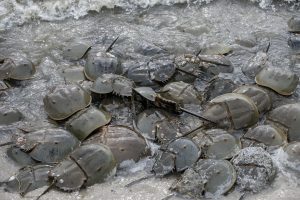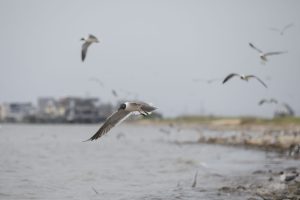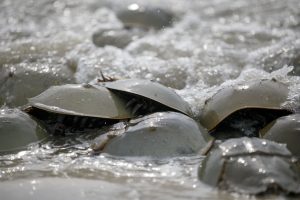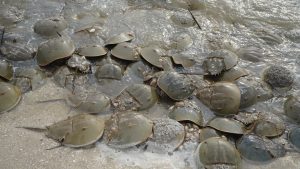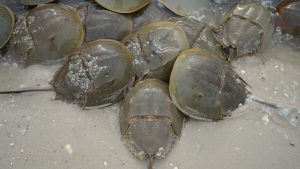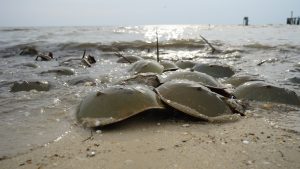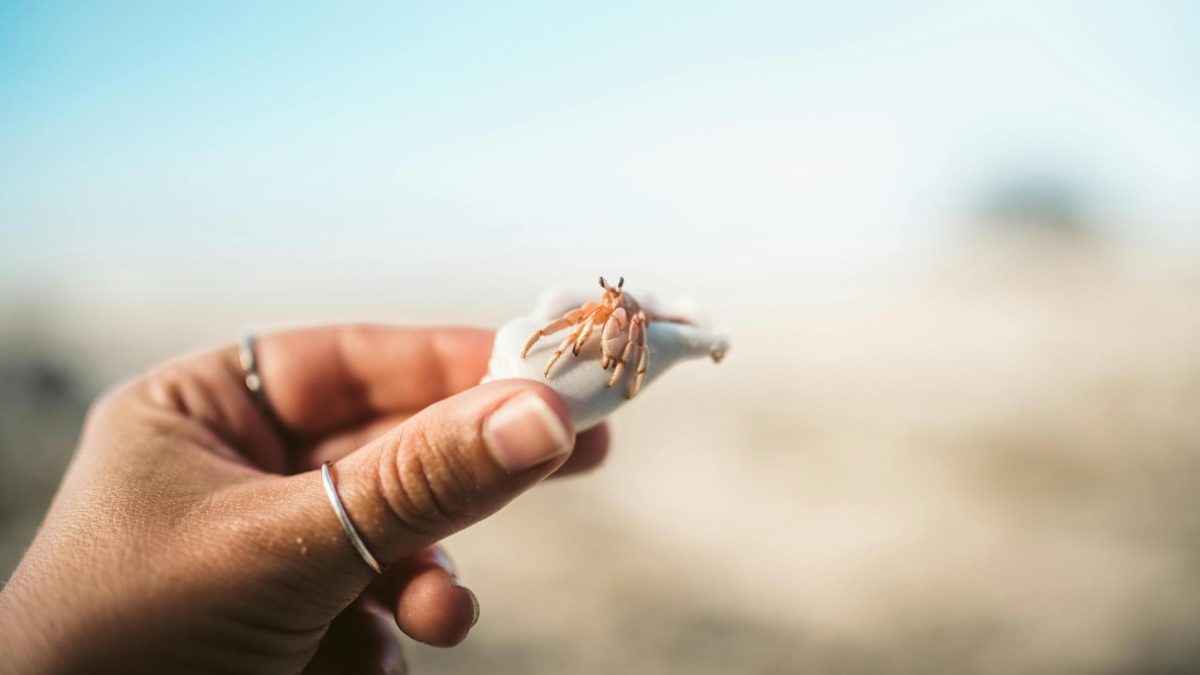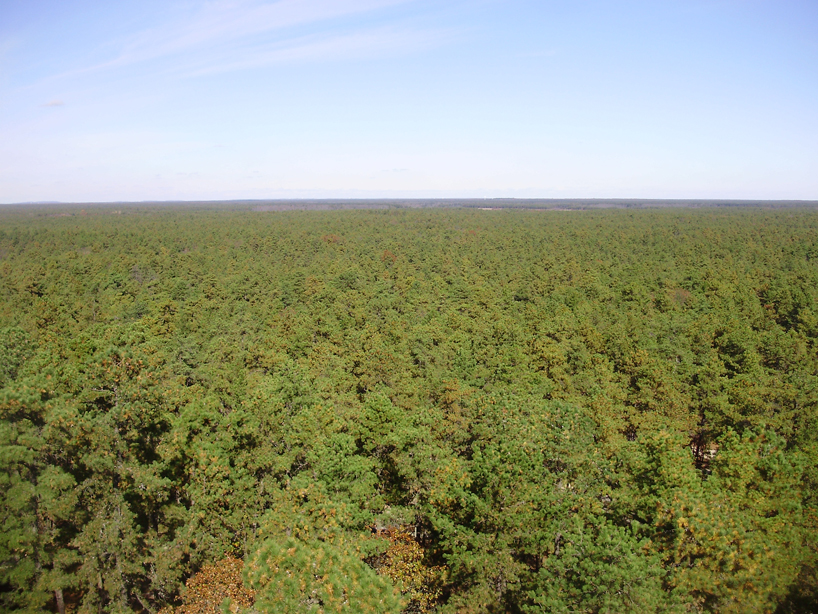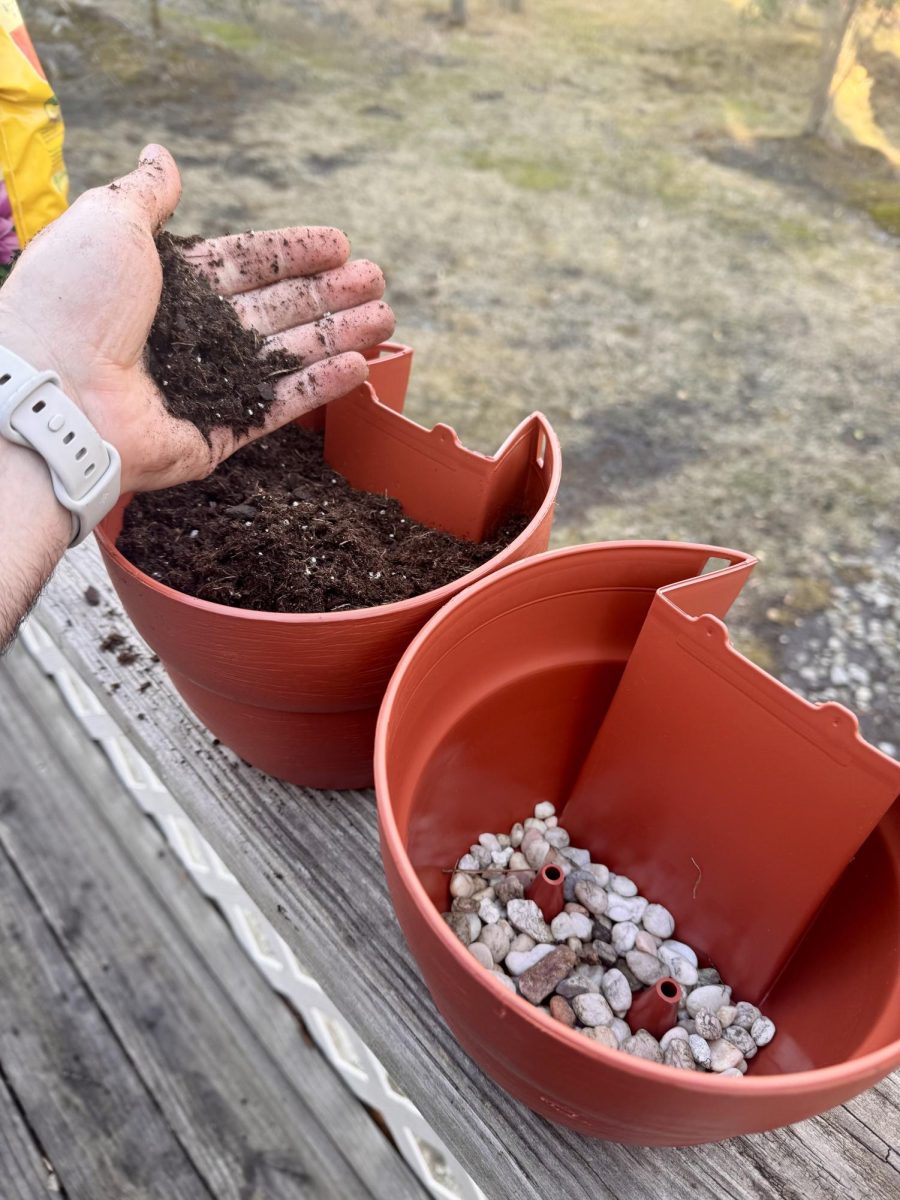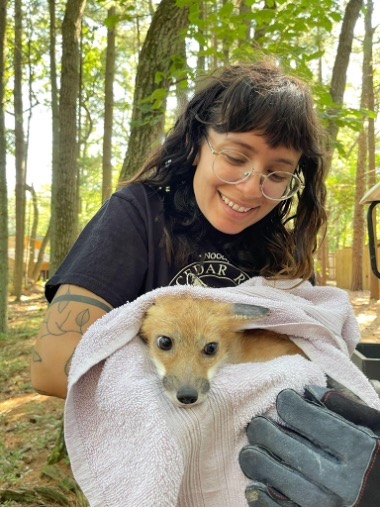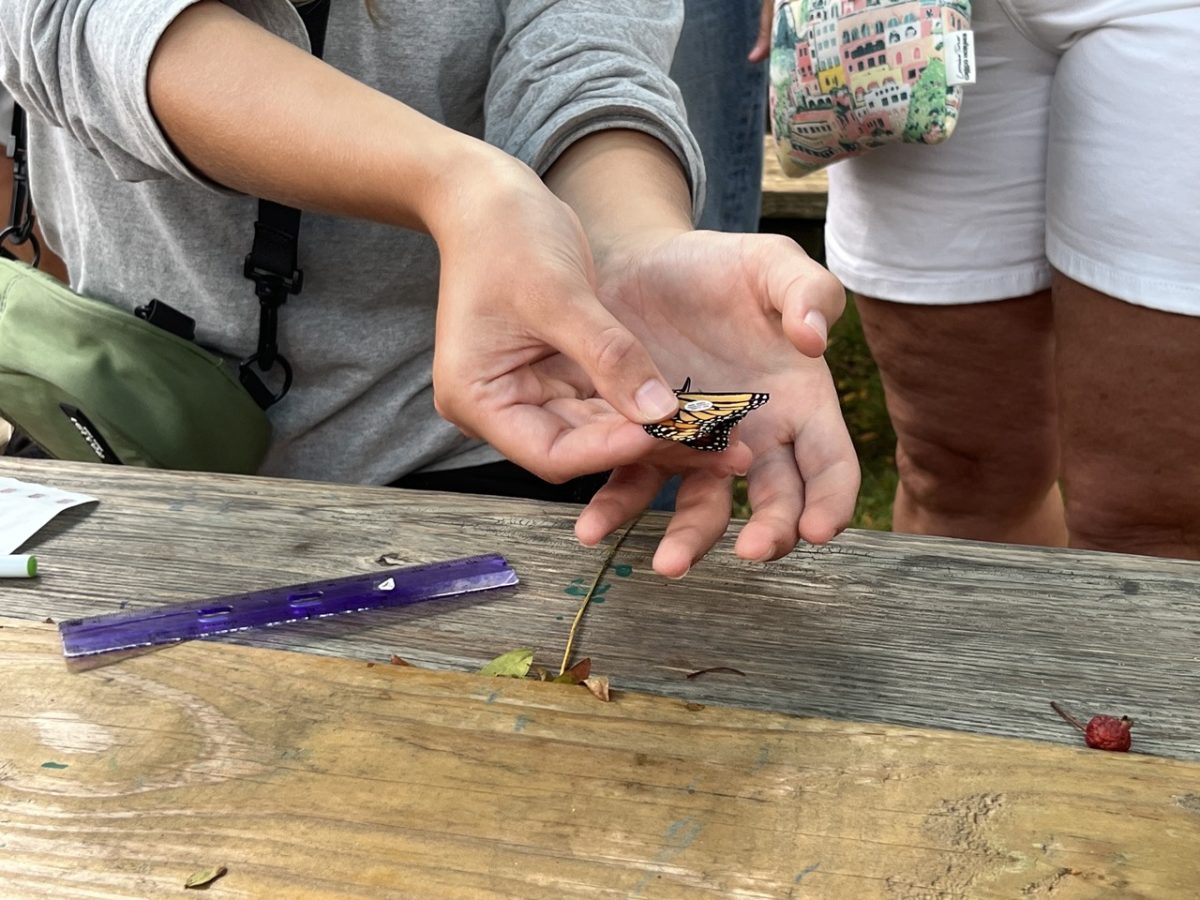May and June marks the mating season for horseshoe crabs and the migration of birds who feed on their eggs. To learn more about them, the American Littoral Society hosts a series of crab and bird walks and monitoring events for the public. You can also volunteer to help tag horseshoe crabs on the Delaware Bay.
A earlier version of this article was originally published in June 2021.
Video by Miguel Martinez
Each spring, one of the biggest clusters of horseshoe crabs in the world comes along the Delaware Bay to mate. Along with these crabs, tens of thousands of shorebirds migrate to the bay, including the red knot which embarks on a four-day, 9,000-mile flight from South America. The Delaware Bay is the birds’ most crucial pit-stop throughout their migration, according to the National History Museum.
All of the shorebirds must gain weight to fully complete their migration towards the north and to successfully breed. To double their weights, the shorebirds heavily rely on horseshoe crab eggs as a source of nutrition.
Unfortunately, due in part to climate change, there are fewer horseshoe crabs on the shorelines from which to feed. Other factors, including overharvesting, human disturbance, and the need for horseshoe crabs for medical purposes, “have also played a role in both the horseshoe crab and the red knot’s vulnerable and threatened statuses,” according to an article in NJ Spotlight.
This red knot population has been particularly affected by the changes in the horseshoe crab population.
“Naturalists scanning the beaches on both the New Jersey and Delaware sides of the bay during the May migration found only 6,880 of the birds this year, down sharply from 19,000 in 2020 and even further below the 30,000 recorded in 2018 and 2019,” according to an article in NJ Spotlight. “The latest number is now the lowest since records began in 1982.”
The American horseshoe crab, also known as Limulus polyphemus, resides along the east coast of North America. A large number of these horseshoe crabs make their way to the Delaware Bay beaches to mate each year.
Photo gallery photos by Miguel Martinez and Joseph Bierman.
To make sure the shorebirds are able to feed on horseshoe crab eggs undisturbed, locals to the Delaware Bay area can volunteer to be a Shorebird Steward to keep people off of the beaches.
Larissa Smith, a biologist with the Conserve Wildlife Foundation, has been organizing the Shorebird Stewards program since 2003.
“Twelve beaches along the Delaware Bay in Cumberland and Cape May Counties are restricted during the shorebird migration, May 7 to June 7th,” Smith said. “Stewards are posted at the beaches to educate the public about the reason for the restricted areas as well as the shorebird migration and horseshoe crab spawn.”
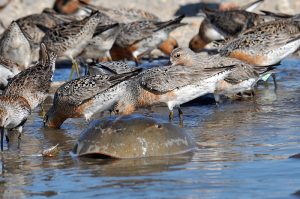
The shorebird migration is extremely unique to the Delaware Bay, people visit from different parts of the United States just to witness it.
“Visitors come from all over to witness this phenomenon and it is our duty to make sure that the birds are protected,” Smith said. “The beaches are only restricted for a short period of time and there are still plenty of other beaches open for people to enjoy during May.”
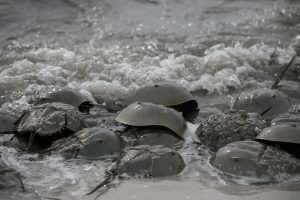
Horseshoe crabs live across North America and Asia. They can commonly be found along the New Jersey and Delaware shorelines but not as often as they once were. Believe it or not, horseshoe crabs have helped to save millions of lives. Their blue-colored blood contains a miracle vaccine ingredient that is extremely sensitive to harmful and toxic bacteria.
The significant ingredient in a horseshoe crab is their immune cells. When faced with invading bacteria, they clot around it and protect the rest of the horseshoe crab’s body from toxins, according to the National History Museum.
Specialists used these cells to create a test called Limulus Amebocyte Lysate, otherwise known as LAL. This test checks new vaccinations for any contaminants. LAL has been used across the world since the 1970s to prevent doctors and other medical professionals from distributing vaccines containing bad bacteria that could ultimately cause illnesses in humans.
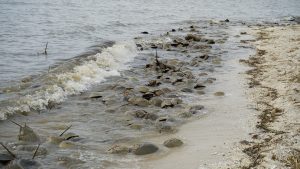
LAL tests vaccines that are available to society that help fight a variety of unwanted viruses and diseases. The LAL test also affects the horseshoe crabs because thousands of them are collected and bled out each year to make sure these vaccines are safe to be distributed.
Horseshoe crab blood is extremely expensive. The products that come from their blue colored blood cost around $60,000 per gallon. One horseshoe crab contains roughly 200 to 400 milliliters of blood.
For more information on how you can volunteer along the shorelines or donate to the Shorebird Stewards, please visit the Littoral Society website.

